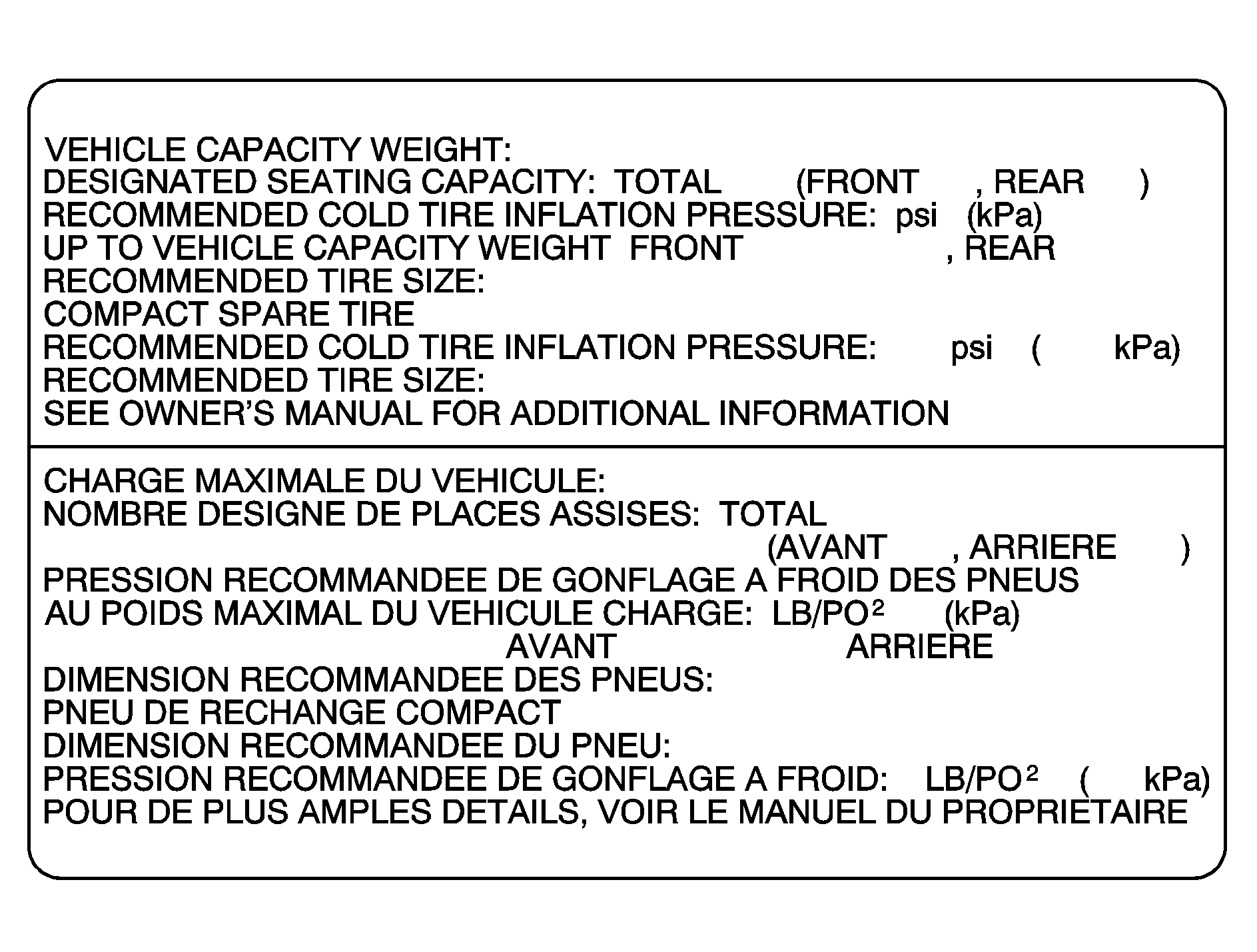
This is an example of what your vehicle's Tire-Loading Information/Certification label might look like. It is located in the glovebox and shows how much weight your vehicle may properly carry. The label tells you the proper size, and recommended inflation pressures for the tires on your vehicle. It also gives you important information about the number of people that can be in your vehicle and the total weight that you can carry. This weight is called the Vehicle Capacity Weight, and includes the weight of all occupants, cargo and all nonfactory-installed options.
Caution: Do not load the vehicle any heavier than the Gross Vehicle Weight Rating (GVWR), or either the maximum front or rear Gross Axle Weight Rating (GAWR). If you do, parts on the vehicle can break, and it can change the way your vehicle handles. These could cause you to lose control and crash. Also, overloading can shorten the life of the vehicle.
Caution: Things you put inside your vehicle can strike and injure people in a sudden stop or
turn, or in a crash.
• Put things in the rear area of your vehicle. Try to
spread the weight evenly. If you have fold-down rear seats, you will find four anchors
on the back wall of your trunk. You can use these anchors to tie down lighter loads.
They are not strong enough for heavy things, however, so put them as far forward as
you can in the trunk or rear area. • Never stack heavier things, like suitcases, inside
the vehicle so that some of them are above the tops of the seats. • Do not leave an unsecured child restraint in your
vehicle. • When you carry something inside the vehicle, secure
it whenever you can.
• Do not leave a seat folded down unless you need to.
